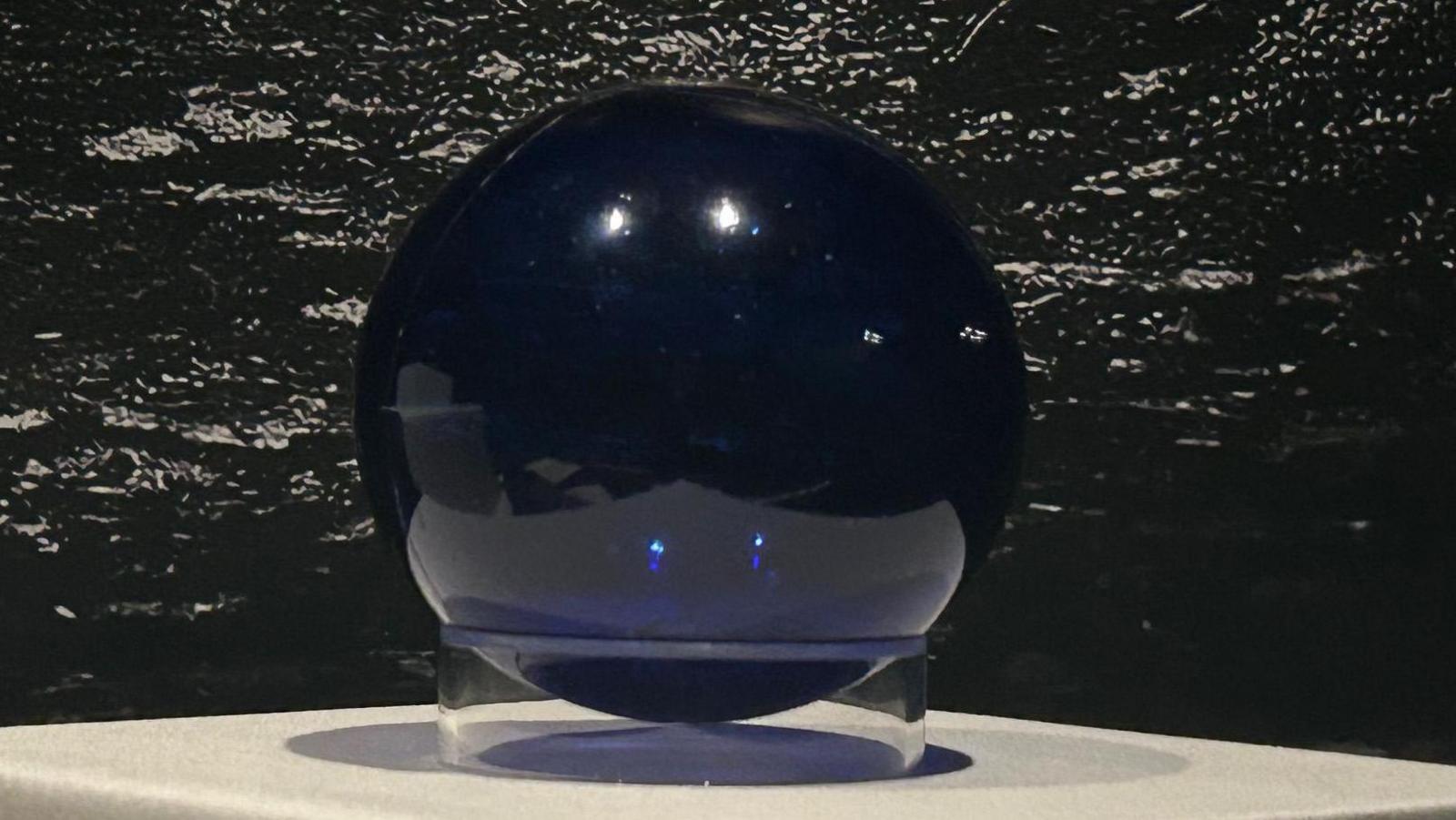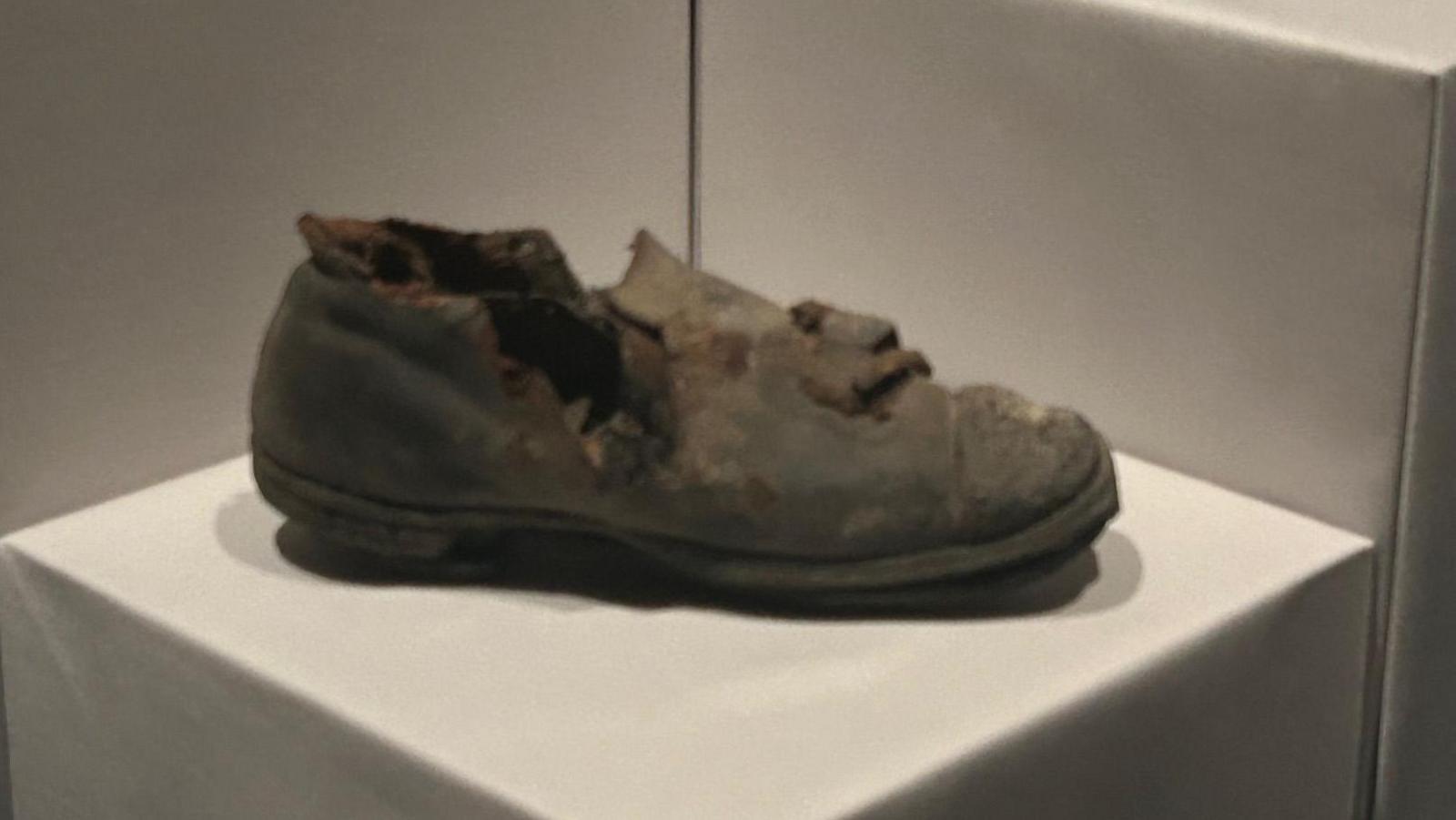Witchcraft charms go on display in castle

Witch balls were filled with shiny tinsel and were intended to confuse passing witches
- Published
A bottle believed to have originally contained a witch's urine is among the items in an exhibition of witchcraft that has opened in Lincoln.
The display, at Lincoln Castle, includes objects used as charms that were often hidden near the entrances to homes to protect families from witches by warding off evil spirits and deflecting spells.
The bottle is thought to date back to the 1820s and contained a small leather strap, human hair and a variety of pins.
The exhibition also includes a witch ball from the 1800s. Witch balls were often filled with shiny tinsel, and were meant to confuse passing witches and deflect the "evil eye".
The fear of witchcraft in Britain peaked in the 16th and 17th Centuries, when witches were believed to cast spells and summon evil spirits to do harm to others.
They were blamed for events ranging from poor harvests to illness and deaths.
The items in the display show that a belief in witchcraft remained in rural areas well into the Victorian era, according to the collections team at Lincolnshire County Council.
The witch bottle was found in pieces in Navenby, near Lincoln, in 1999 and was reassembled by the team.
The ball was found in Willoughton, where a churchwarden was rumoured to be involved in witchcraft due to her lazy eye and her interest in herbal remedies.

It is thought this child's shoe was once concealed in the walls, floor or attic of a building to stop bad luck or an evil spirit from entering the property
Lincoln Castle has its own connection to witches.
In 1618, Joan Flower and her daughters Margaret and Philippa were taken to the castle jail, charged with witchcraft after the son of the family they had been working for at Belvoir Castle fell ill and died.
It is said that on the journey, Joan, determined to prove her innocence, agreed to take part in an "ordeal by bread".
A chaplain blessed some bread, as it was thought no witch could eat something as sacred.
Joan put the bread in her mouth, fell to the ground and quickly died.
Margaret and Philippa later admitted to using magic to make the son sick.
They were found guilty of witchcraft, sentenced to death and hanged outside the castle walls in March 1619.
The display is inside the castle’s Magna Carta vault until Sunday, 5 January 2025.
Listen to highlights from Lincolnshire on BBC Sounds, watch the latest episode of Look North or tell us about a story you think we should be covering here, external.
Related topics
Related stories
- Published29 October 2024
